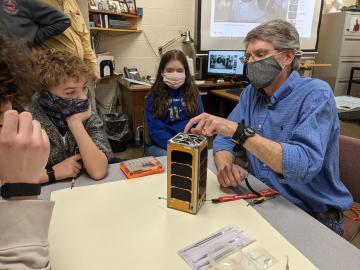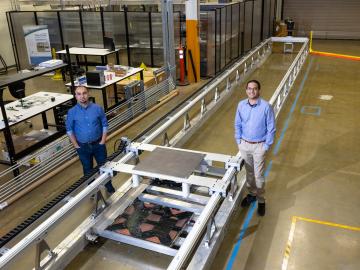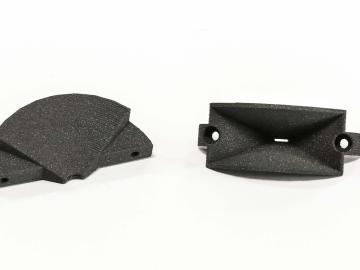
Filter News
Area of Research
- (-) Energy Science (65)
- (-) Supercomputing (45)
- Advanced Manufacturing (3)
- Biological Systems (1)
- Biology and Environment (66)
- Biology and Soft Matter (1)
- Computational Biology (1)
- Fusion and Fission (7)
- Isotopes (6)
- Materials (30)
- Materials for Computing (5)
- National Security (13)
- Neutron Science (20)
- Nuclear Science and Technology (7)
News Type
News Topics
- (-) 3-D Printing/Advanced Manufacturing (23)
- (-) Advanced Reactors (2)
- (-) Biomedical (9)
- (-) Clean Water (3)
- (-) Composites (2)
- (-) Cybersecurity (7)
- (-) Environment (29)
- (-) Exascale Computing (16)
- (-) Materials Science (12)
- (-) Space Exploration (2)
- (-) Transportation (20)
- Artificial Intelligence (23)
- Big Data (16)
- Bioenergy (12)
- Biology (9)
- Biotechnology (2)
- Buildings (12)
- Chemical Sciences (4)
- Computer Science (49)
- Coronavirus (12)
- Energy Storage (20)
- Fossil Energy (1)
- Frontier (17)
- Grid (13)
- High-Performance Computing (25)
- Hydropower (1)
- Isotopes (1)
- Machine Learning (8)
- Materials (9)
- Mathematics (3)
- Mercury (1)
- Microelectronics (1)
- Microscopy (4)
- Nanotechnology (6)
- National Security (4)
- Neutron Science (8)
- Nuclear Energy (4)
- Partnerships (4)
- Physics (4)
- Polymers (1)
- Quantum Computing (11)
- Quantum Science (12)
- Security (4)
- Simulation (12)
- Software (1)
- Summit (23)
Media Contacts

Four first-of-a-kind 3D-printed fuel assembly brackets, produced at the Department of Energy’s Manufacturing Demonstration Facility at Oak Ridge National Laboratory, have been installed and are now under routine operating

An ORNL-led team comprising researchers from multiple DOE national laboratories is using artificial intelligence and computational screening techniques – in combination with experimental validation – to identify and design five promising drug therapy approaches to target the SARS-CoV-2 virus.

RamSat’s mission is to take pictures of the forests around Gatlinburg, which were destroyed by wildfire in 2016. The mission is wholly designed and carried out by students, teachers and mentors, with support from numerous organizations, including Oak Ridge National Laboratory.

Consumer buy-in is key to the future of a decarbonized transportation sector in which electric vehicles largely replace today’s conventionally fueled cars and trucks.

At the Department of Energy’s Oak Ridge National Laboratory, scientists use artificial intelligence, or AI, to accelerate the discovery and development of materials for energy and information technologies.

Through a consortium of Department of Energy national laboratories, ORNL scientists are applying their expertise to provide solutions that enable the commercialization of emission-free hydrogen fuel cell technology for heavy-duty

Oak Ridge National Laboratory was among an international team, led by Lawrence Livermore National Laboratory, who synthesized 108 elevated carbon dioxide, or CO2, experiments performed in various ecosystems to find out how much carbon is

Twenty-seven ORNL researchers Zoomed into 11 middle schools across Tennessee during the annual Engineers Week in February. East Tennessee schools throughout Oak Ridge and Roane, Sevier, Blount and Loudon counties participated, with three West Tennessee schools joining in.

The U.S. Air Force and Oak Ridge National Laboratory launched a new high-performance weather forecasting computer system that will provide a platform for some of the most advanced weather modeling in the world.

The ExOne Company, the global leader in industrial sand and metal 3D printers using binder jetting technology, announced it has reached a commercial license agreement with Oak Ridge National Laboratory to 3D print parts in aluminum-infiltrated boron carbide.


